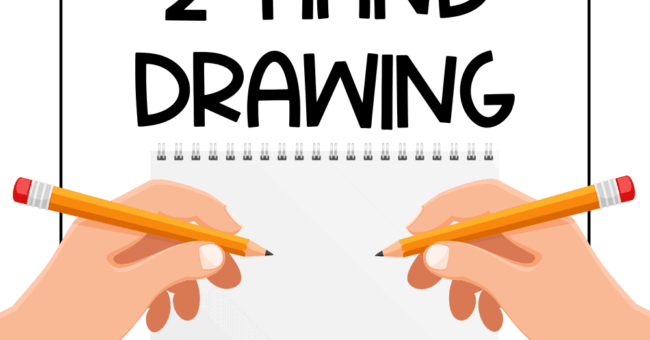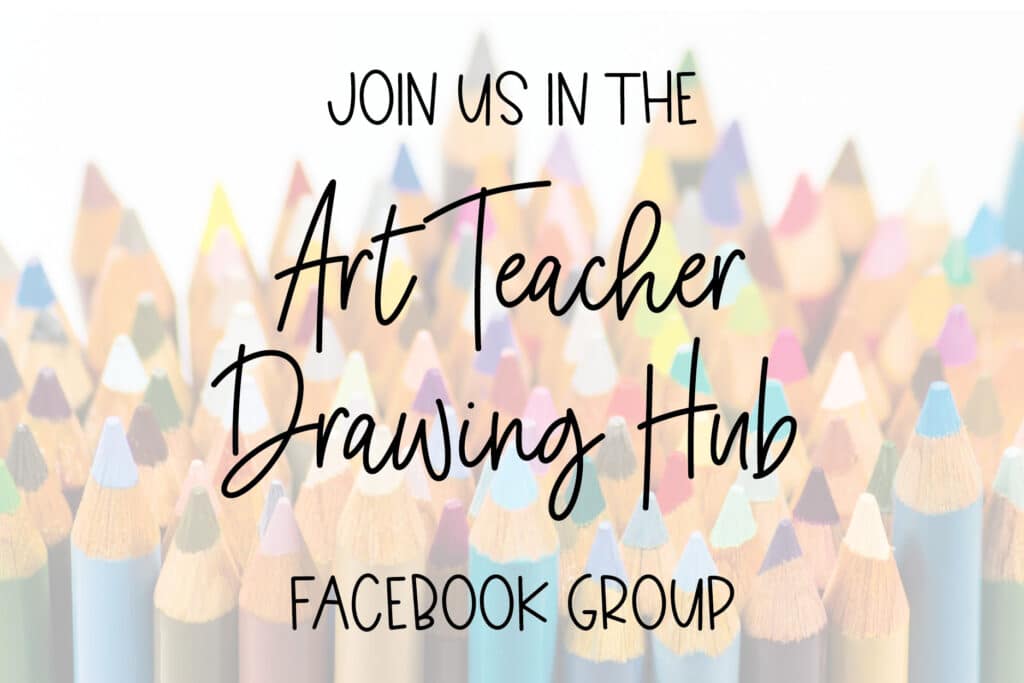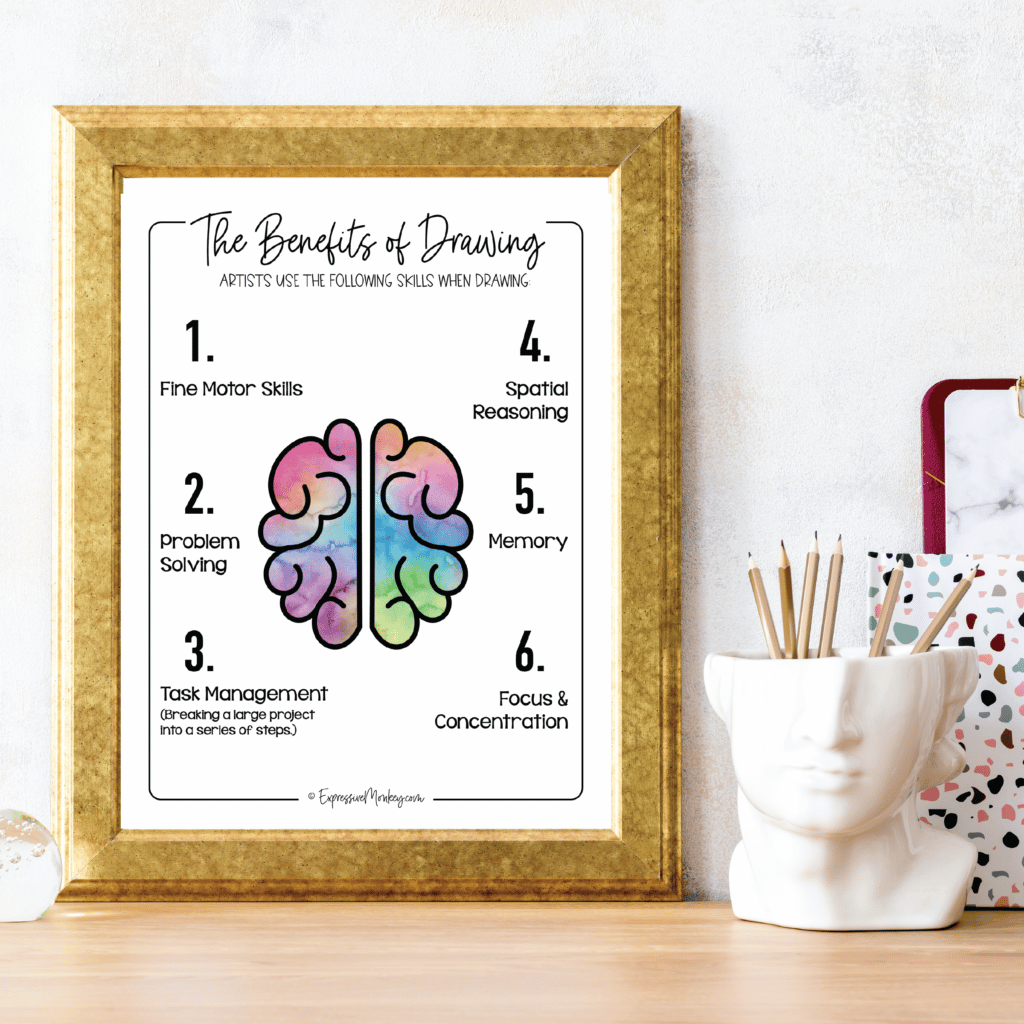

If you’re looking for a new way to engage your students and help them focus, try introducing a 2-hand drawing exercise! This simple, yet powerful, drawing warm-up activity taps into the concept of bilateral drawing, where both hands are used simultaneously to create a single artwork. While it may sound a bit tricky at first, the benefits of this exercise go beyond just improving drawing skills. Let’s explore how this brain exercise can boost bilateral coordination, improve focus, and create a calming environment in the classroom!
What is Bilateral Drawing?
Bilateral drawing, or 2-hand drawing, is exactly what it sounds like—drawing with both hands at the same time. This type of drawing exercise encourages bilateral integration, which is the ability of both sides of the brain to communicate effectively. When students engage in bilateral hand coordination activities, such as drawing with both hands, they activate interhemispheric interaction. This means that both hemispheres of the brain are working together, promoting cognitive development and enhancing overall brain function.
What does it look like?
Before I tell you about the benefits, you might be wondering what this looks like and maybe curious about trying it yourself first. I have some YouTube videos on my Mindful Drawing Studio YouTube channel that have some bilateral drawings you can watch as you draw along. So grab 2 pencils and give it a try. But be sure to come back here and learn more about how to use this in the classroom.
Here are a few 2-hand drawings you can find on my Mindful Drawing Studio YouTube channel:
Triangles Drawing Warm-Up
1-2-3 Drawing Warm-Up
A-B-C Drawing Warm-Up
Benefits of Using Bilateral Coordination Activities with Students
- Improve Focus and Attention: Bilateral drawing can act as a brain exercise that enhances concentration. By focusing on using both hands simultaneously, students naturally improve their ability to concentrate on the task at hand. This increased focus can translate to other activities in the classroom, making it an effective tool for teachers looking to create a more attentive learning environment.
- Boost Bilateral Coordination and Integration: Bilateral activities, like drawing with both hands, help develop bilateral coordination—a key skill for everyday tasks such as writing, cutting, and even tying shoelaces. Engaging both hands together encourages bilateral integration, where the brain learns to coordinate both sides of the body smoothly and efficiently.
- A Calming Activity for Students: Bilateral hand coordination activities for kids can be incredibly calming. The rhythmic motion of moving both hands simultaneously can help regulate the nervous system, reduce stress, and provide a mindful moment amidst a busy school day. It’s like a meditative practice disguised as a fun drawing warm-up!
- Encourages Creativity with Monsters to Draw: Want to make this exercise even more engaging? Add a theme! Encourage students to draw cute monsters using both hands. This playful twist not only makes the activity more fun but also allows them to explore different shapes, sizes, and features, sparking their imagination. Need some inspiration? This 2-Hand Monster Drawing resource has 10 monster videos your students can watch and draw along.
- Promotes Brain Development Through Interhemispheric Interaction: When students participate in bilateral coordination activities like 2-hand drawing, they engage in interhemispheric interaction. This interaction between the two hemispheres of the brain is essential for cognitive development, as it supports skills like problem-solving, spatial awareness, and memory retention.
How to Incorporate 2-Hand Drawing in the Classroom
- Warm-Up Exercise: Start your art lessons with a 5-10 minute bilateral drawing warm-up. Provide paper and pencils or crayons, and ask students to draw simple shapes or patterns using both hands. Gradually, you can introduce more complex designs, such as drawing cute monsters.
- Integrate into Daily Routine: Use bilateral drawing as a quick brain break between lessons. It can serve as a great transition activity that helps students shift focus and reset their minds.
- Combine with Other Bilateral Activities: Pair 2-hand drawing with other bilateral hand coordination activities for kids, such as clapping games, mirror drawing, or even basic yoga poses. These activities can create a well-rounded approach to developing bilateral skills.
Final Thoughts
Trying a 2-hand drawing exercise with your students is more than just a fun art activity. It’s a brain exercise that fosters bilateral coordination, improves focus, and serves as a calming activity. Plus, it opens the door to endless creativity with themes like monsters to draw. So, the next time you’re planning a drawing lesson or looking for a new warm-up, consider giving bilateral drawing a try. Your students will love it, and you’ll love seeing the benefits unfold in your classroom!
My 2-Hand Monster Drawing videos make it easy to get started!
Have you made a 2-hand drawing with your students? Tell us what you drew and share any tips to get started.
Use this infographic to display in your room or share with parents, administrators, or other teachers as a way to point out some of the academic benefits of learning to draw. While they are not the only reason for using drawing as part of a balanced curriculum, they are certainly worthy of celebrating and may help you advocate for including drawing as part of your art or classroom learning experiences.
You can read more about The Benefits of Drawing in this blog post.
Let’s Connect!
Join my email list to hear about new resources, sales, and tips for teaching art and drawing, and get 15% off your next order!

Continue the conversation in my FB group of art teachers:
Don’t forget to pin this!
The post Improve Bilateral Coordination Through Drawing appeared first on Expressive Monkey.
